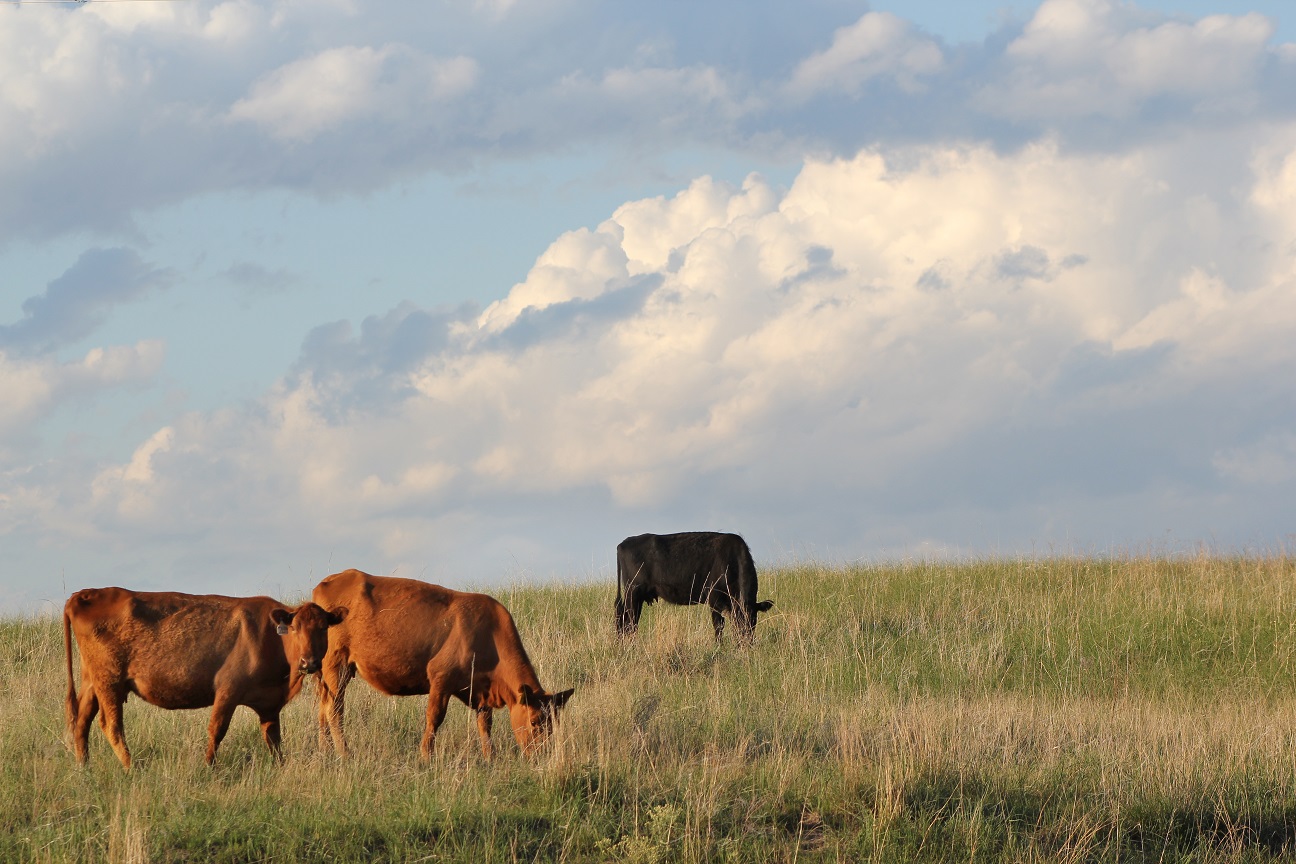Beef Systems Initiative - Year 1 Milestones

The first year of data collection for the Beef Systems Initiative (BSI) is complete. This initiative, funded by the Institute of Agriculture and Natural Resources at the University of Nebraska, is a faculty-driven, interdisciplinary project that began in January 2015. It included faculty from several disciplinary groups in Agronomy and Horticulture, Animal Science, and Agricultural Economics with interests in integrated production systems. From these early discussions, a long-term systems project was developed and administered by the Center for Grassland Studies. Research began in late 2017.
Two recent publications from the group demonstrate the importance of perennial grasslands and integrated crop-livestock systems. Cumming et al. (2019) examined the cattle grazing capacity of Nebraska rangelands and estimated an $875 million direct impact to the state for use of perennial grasslands. Redfearn et al. (2019) established the value of grazed corn residue as a forage resource to the state of Nebraska. They estimated a current value of grazed corn residue of $75 million returned to the crop sector with the gross value for grazed corn residue of $153 million for the beef cattle sector. It is important to highlight this since these gross values for perennial grasslands and corn residue recur annually.
An on-going BSI research project comparing a traditional spring calving system to fall calving in an alternative, crop-livestock system demonstrates the importance of weather risks. Calves in the fall-calving system had greater death loss and lower calf weaning weights than calves in the traditional system during the first year of the study (2018-19). For example, the fall calves were born during abnormally wet conditions in July and August then experienced fall and winter grazing conditions that became plagued with mud and ice. During this same period, the spring calves in the traditional system had been weaned and were in the feedlot on a grower ration. Since this is only the first year of data in a six-year study, we cannot make any definitive conclusions at this point. However, these experiences demonstrate the various risks involved with different production systems.
As an additional component to the BSI, the Foundation for Food and Agricultural Research (FFAR) provided matching funds to study how to increase the efficiency of land use (i.e. the amount of food produced per acre) by incorporating beef cattle into cropping systems in a way that improves ecosystem services to ensure resiliency and sustainability. In particular, we aim to quantify greenhouse gas emissions and water budgets from replicated production-scale systems over the next 5 years.
Other data to come out of the first year of the BSI research project includes baseline grain yields from a replicated plot study were very good in 2018 with wheat yields at 80 bushels/acre, corn yields near 222 bushels/acre, and soybean yields about 70 bushels/acre. Oats planted following the wheat crop was grazed this winter along with the corn residue under less than ideal grazing conditions. In 2019, we will collect yields from grazed and non-grazed plots to determine cattle effects on grain yield and soil samples to characterize indicators of soil health.
Another sub-project began development of case studies to model factors that improve beef production efficiencies. A portion of this data was collected from regional focus groups that also provided feedback about experience working with integrated crop-livestock systems. The next stages of BSI participatory research include the focus group meetings in each region to examine the potential to increase cow/calf production from perennial grasslands and the associated profit potential.
The initial work to create an integrated crop-livestock systems simulation model began with the development of a simple cereal rye growth model that provided spring grazing for feeder cattle with the associated management decisions. This model will continue to be expanded and refined over the next three years to encompass more productions systems and greater depth within each system.
Evaluation of harvest efficiencies on ranches in the Nebraska Sandhills will begin during the summer of 2019. Several graduate students will begin work this summer and fall to collect data and grazing management information to support objectives of the project. Because this is a systems project, our interests are to evaluate these systems over a period of 5 to 6 years.
References
Cumming, K., J. Parsons, W. Schacht, and B. Baskerville. (2019). Examining the capacity of Nebraska rangelands for cattle production. Western Economics Forum, 17(1):46-61.
Redfearn, D., J. Parsons, M. Drewnoski, M. Schmer, R. Mitchell, J. MacDonald, J. Farney, and A. Smart. (2019). Assessing the value of grazed corn residue for crop and cattle producers. Agricultural and Environmental Letters, 4:180066 (2019) doi:10.2134/ael2018.12.0066.
Collaborators
Daren Redfearn, Department of Agronomy and Horticulture
Mary Drewnoski, Department of Animal Science
Jay Parsons, Department of Agricultural Economics
Jim MacDonald, Department of Animal Science
Mitch Stephenson, Department of Agronomy and Horticulture
Interviews with the authors of BeefWatch newsletter articles become available throughout the month of publication and are accessible at https://go.unl.edu/podcast.
